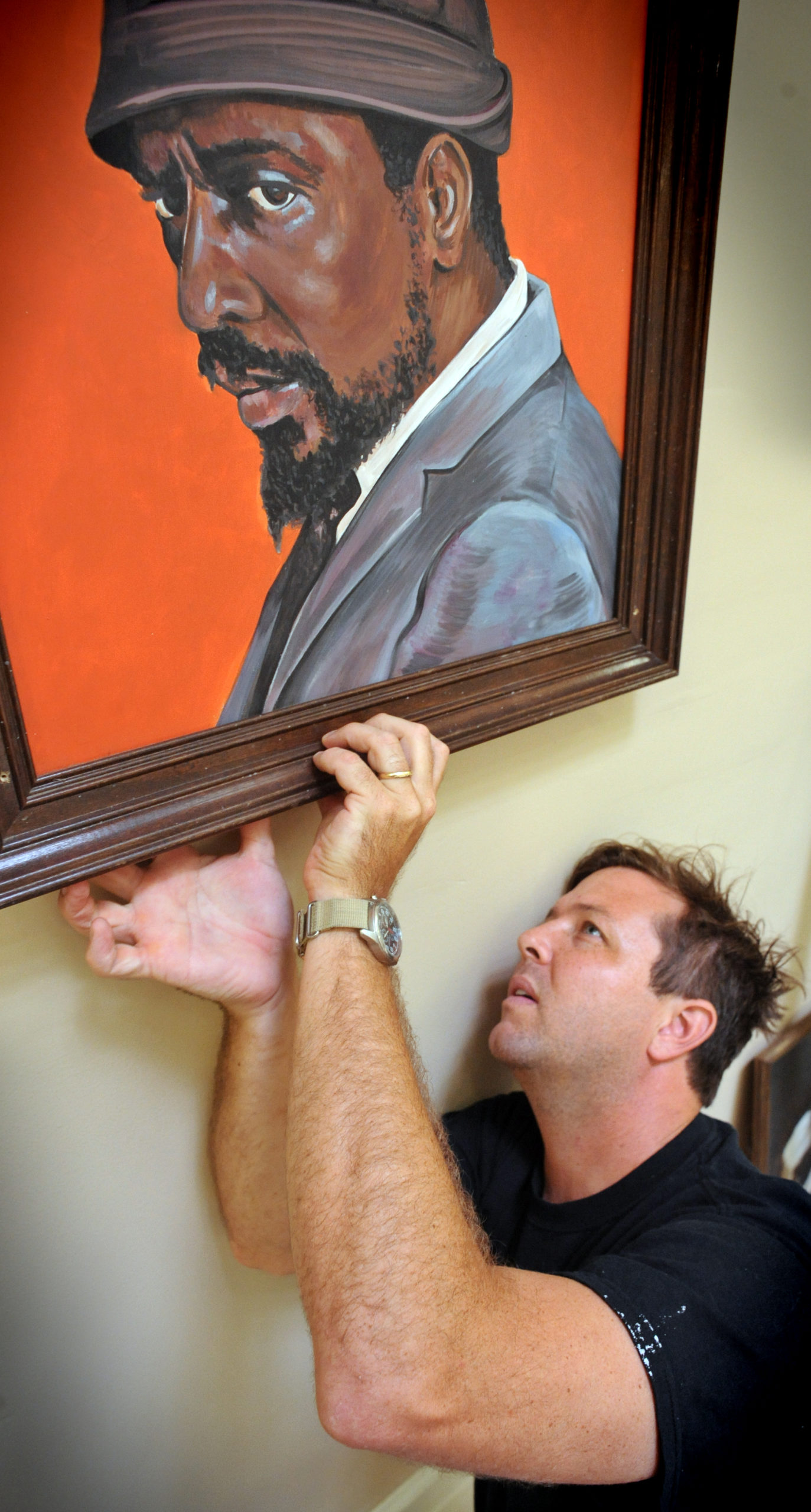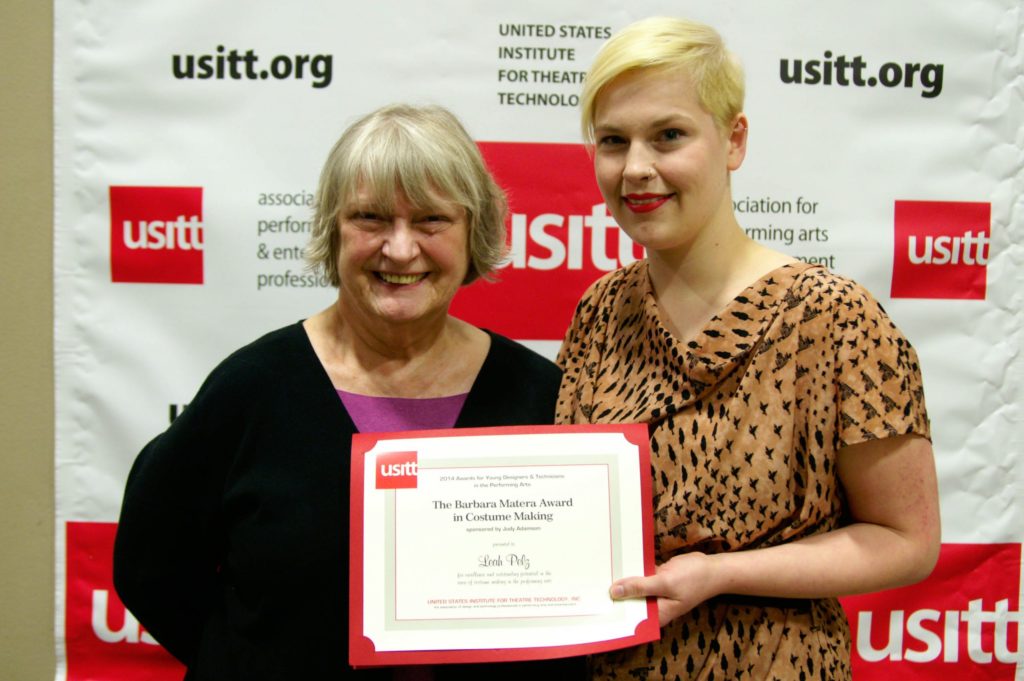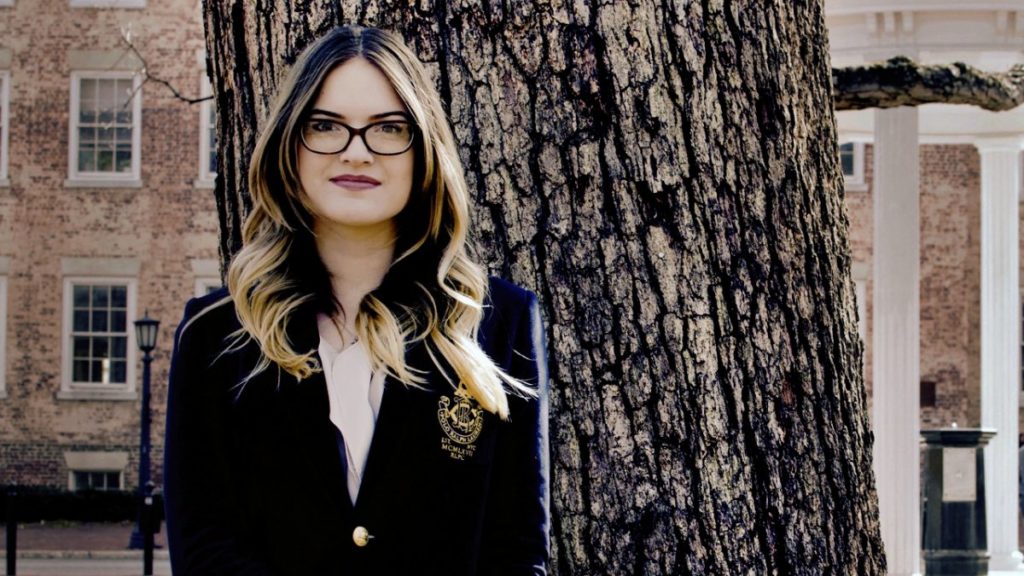
Mark Katz had two thoughts last March when he heard the beloved eatery Pepper’s Pizza would close immediately after 26 years on Franklin Street.
“I don’t know which came first, the thought, ‘I need to get one more slice of pizza,’ or ‘I need to get a hold of those paintings,’” said Katz, chair of UNC’s music department (pictured above).
The 19 paintings in question were the restaurant’s vibrant portraits of musicians native to North Carolina, a favorite sight for regular customers like Katz, who often lunched at Pepper’s and had a standing
Friday pizza date with his wife and daughter there for years.
By the time Katz could get downtown the evening of March 4, Pepper’s, which continued to make pizzas for a packed crowd until the cheese ran out, had served its last slice. Though the restaurant was closed and employees were enjoying a private party inside, Katz made his way in. He found artist Scott Nurkin’s contact information on the wall and stepped out to the sidewalk to make a call.
“I didn’t have a lot of time to think, and I wasn’t thinking I wanted the paintings for myself,” said Katz. “I immediately knew I wanted to house them at the Department of Music.”
The paintings are the work of artist and musician Nurkin, who graduated from Carolina with a degree in art in 2000 and whose murals can be seen across the state. He’d made the portraits for David “Pepper” Harvey, the restaurant’s owner and a close friend of Nurkin and his wife, Erin, then a manager at Pepper’s. The collection debuted when the restaurant moved down the block to 107 East Franklin St. in 2006.
Each painting depicts a musician – John Coltrane, Thelonious Monk, Randy Travis, Ben Folds and Charlie Daniels are just a few – in what Nurkin saw as their heydays. He created each in a day, or over the course of just a few days, and set them in thrift-store frames. They were screwed into the wall atop a Carolina-blue mural of the state.

In exchange, Harvey had promised him free pizza and beer for life. That deal ended too soon when Harvey gave Nurkin a subtle heads-up that he should come get the paintings. Business, especially during lunch, had been declining for a few years, and Pepper’s could not stay open.
“I think everybody was shocked,” Nurkin said. “You expected Pepper’s to last as long as the Smith Center.”
When Nurkin finally made it over to Pepper’s late that evening, someone immediately offered him $500 for the Randy Travis portrait.
“I honestly had no idea how valuable these paintings were to people,” Nurkin said. “Suddenly everyone was asking what was going to happen to them. Paintings create their own value, but I was never thinking about that. I was just banging out paintings for my friend Pepper’s wall.”
When Nurkin and Katz finally connected, Katz said he knew the offer was a long shot.
When asked if he would sell the paintings to Carolina, Nurkin said, “My most immediate thought was, ‘yes.’ But I was still thinking of auctioning them off to help Pepper.”
In the end, the chance to keep the collection together, and to connect his work to the University, helped him make the decision. And, Nurkin added, he liked Katz.
“When I got to know Mark, I realized – here is this classically trained violinist who wrote a book on the art of the hip-hop DJ. I knew it would be a total honor to have my work live in Hill Hall, and I can’t think of it going to a better place,” he said.
After Nurkin cleaned the paintings of pizza grease and grime, they spent the summer on exhibition at the Center for the Study of the American South’s Love House in tandem with scholars’ essays on the musicians. Through the end of September, Nurkin will be installing them at Hill Hall around both floors of the rotunda and recreating the North Carolina mural on the second floor.
Since the artist frequently visits Hanes Hall to check out current student art, he’ll be able to see his work nearby. Had the paintings gone to private buyers, he might not have seen them again.
“To have them at my alma mater and just a couple of hundred yards away from their original home makes a lot of sense,” he said.
Katz said acquiring the collection was a way of keeping alive an institution treasured by the Carolina community and preserving a part of the University’s mission. Alumni, students, faculty and staff still can enjoy the paintings now that the restaurant is closed, and it gives the Chapel Hill community another reason to visit campus.
That celebration of music flowing back and forth between town and gown communities continues a goal Katz has as a music lover and educator.
“Part of my work in teaching popular music is bringing students and the local music community into contact,” he said. “We’re music educators, and this is another way of educating people about music.
“We’re a state school and here to support the state, and these paintings reflect a big part of the state’s musical heritage.”




